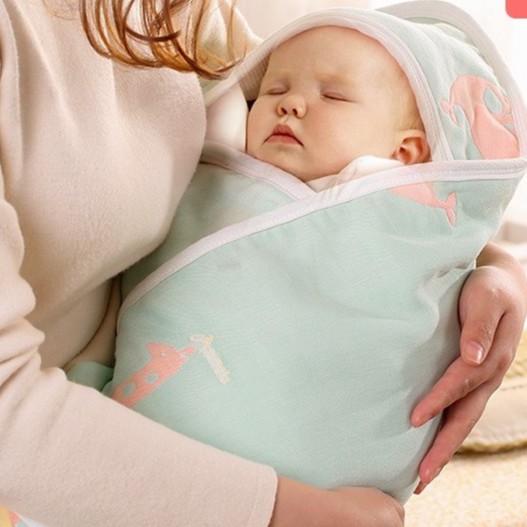Swaddling has been a comforting practice for newborns for centuries. It mimics the cozy, secure feeling of the womb, helping your baby to sleep soundly and feel safe. But with so many different techniques and products available, it can be overwhelming for new parents. Here’s a simple guide to help you master the art of swaddling.
What is Swaddling?
Swaddling is the practice of wrapping a baby snugly in a blanket. This creates a secure and warm environment that can help calm and soothe your baby.
Benefits of Swaddling
- Promotes sleep: Swaddling can help your baby sleep longer and more peacefully by reducing startling reflexes.
- Reduces stress: The snug feeling of being swaddled can help soothe and calm your baby.
- Improves sleep quality: Swaddling can help your baby sleep more deeply, leading to better rest for both you and your baby.
How to Swaddle Your Baby
Choose the right swaddle: There are many different types of swaddles available, including muslin blankets, cotton blankets, and specially designed swaddle wraps. Choose a soft, breathable fabric that is the right size for your baby.
Follow these steps:
- Lay the swaddle flat: Spread the swaddle out on a flat surface like a changing table.
- Fold one corner: Fold down one corner of the swaddle to create a triangle shape.
- Place your baby: Lay your baby on the swaddle with their head at the top of the triangle.
- Wrap the first side: Bring the left side of the swaddle across your baby’s body and tuck it under their right side.
- Wrap the second side: Bring the right side of the swaddle across your baby’s body and tuck it under their left side.
- Fold the bottom: Fold the bottom of the swaddle up over your baby’s feet, tucking it in securely.
Important safety tips:
- Always place your baby on their back to sleep, even when swaddled.
- Make sure the swaddle is not too tight. You should be able to fit two fingers comfortably between your baby’s chest and the swaddle.
- Stop swaddling once your baby shows signs of rolling over.
When to Stop Swaddling As your baby grows and becomes more mobile, they may start to dislike being swaddled. Some babies may show signs of discomfort by pulling at the swaddle or trying to roll over. It’s important to stop swaddling when your baby starts to show signs of wanting to break free.
Remember: Every baby is different, and what works for one baby may not work for another. If you have any concerns about swaddling, consult your pediatrician.
By following these tips, you can safely and effectively swaddle your baby and enjoy the benefits of this soothing practice.

baby being swaddled
Would you like to add any specific information to this blog post, such as different swaddle techniques or tips for dealing with a squirmy baby?

